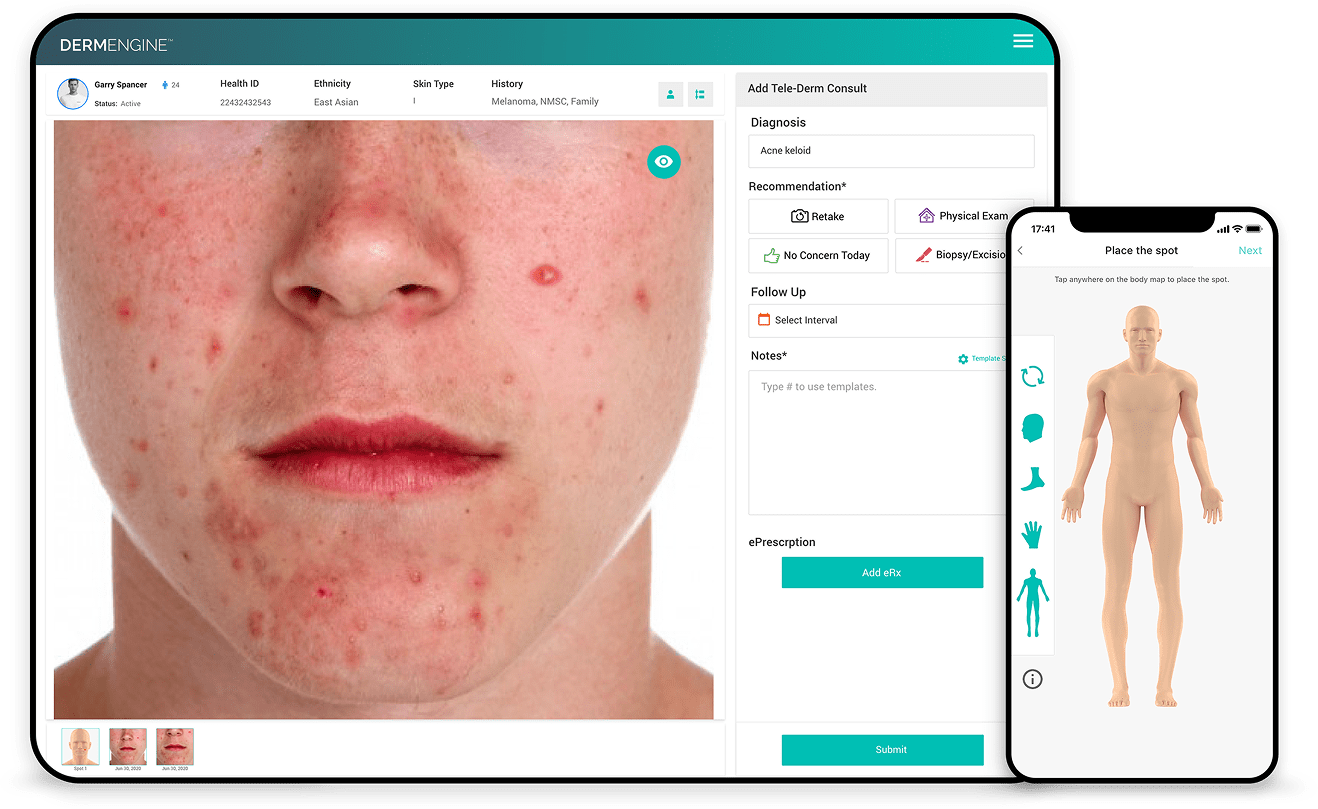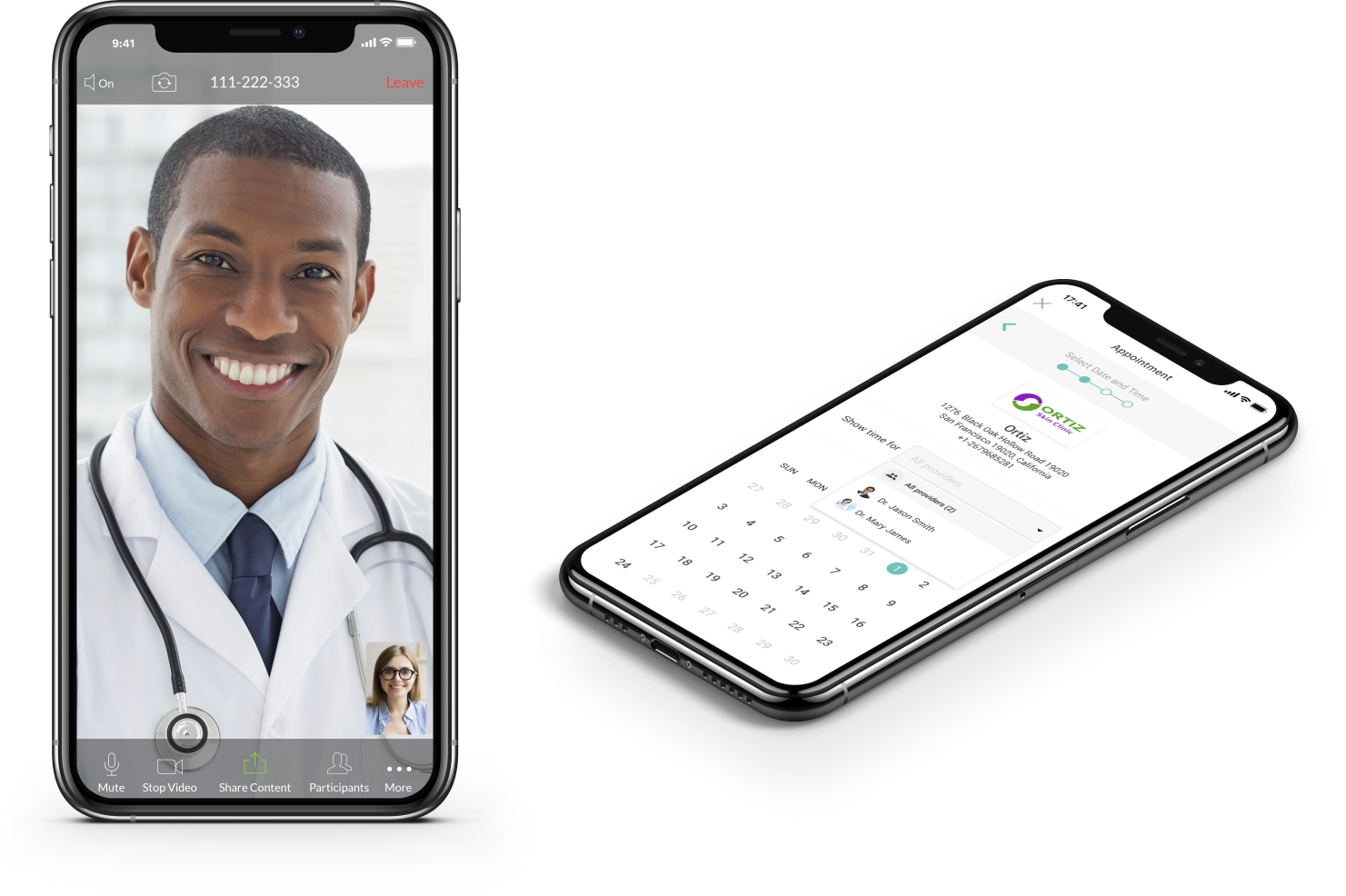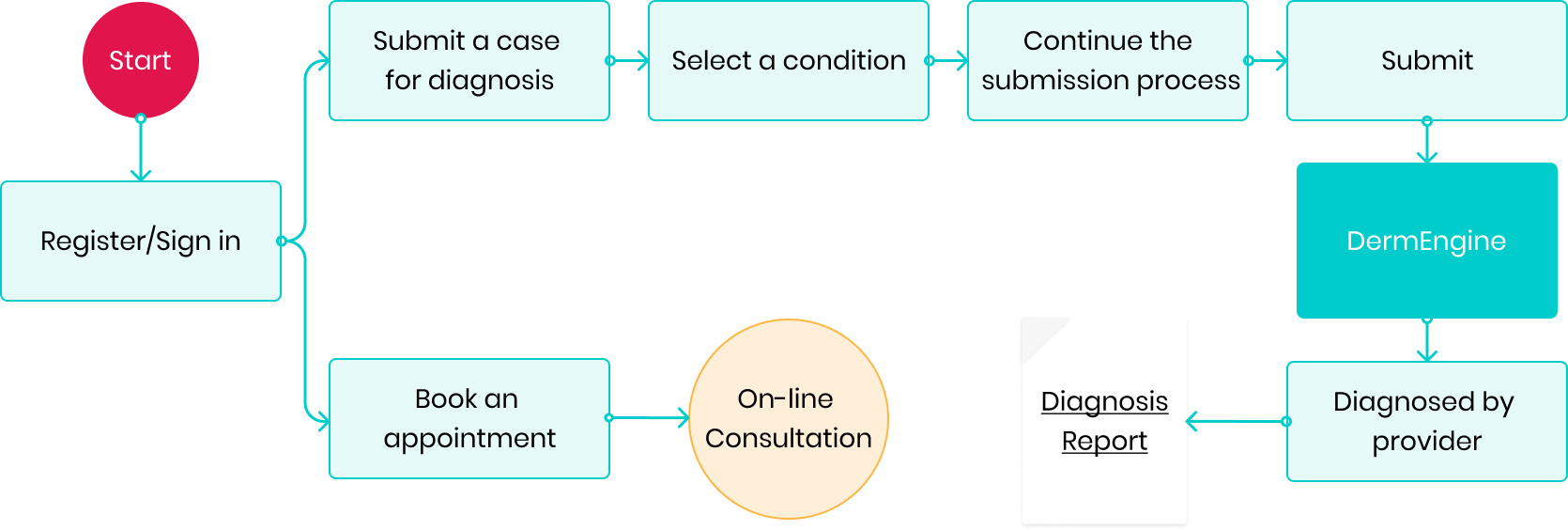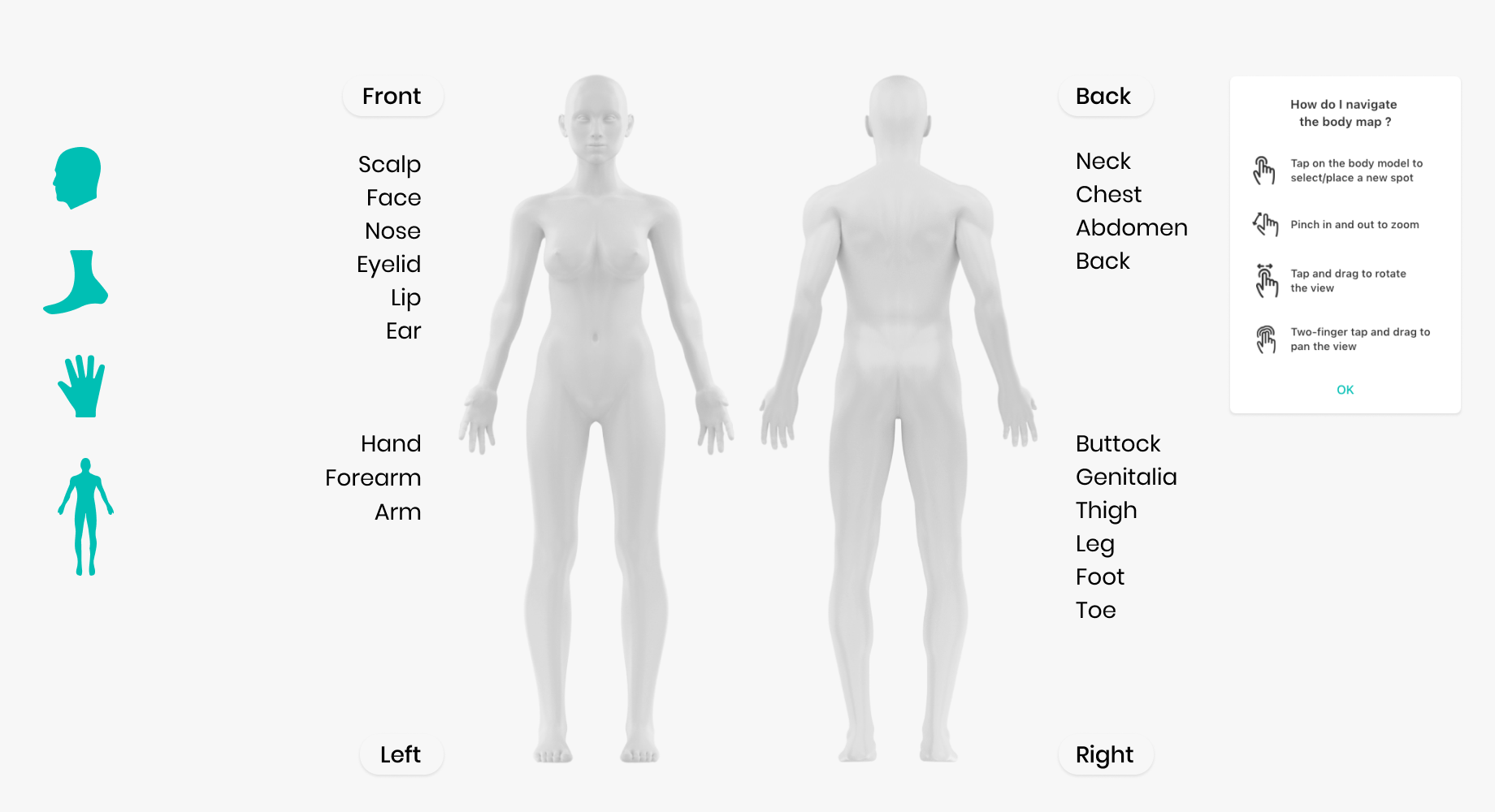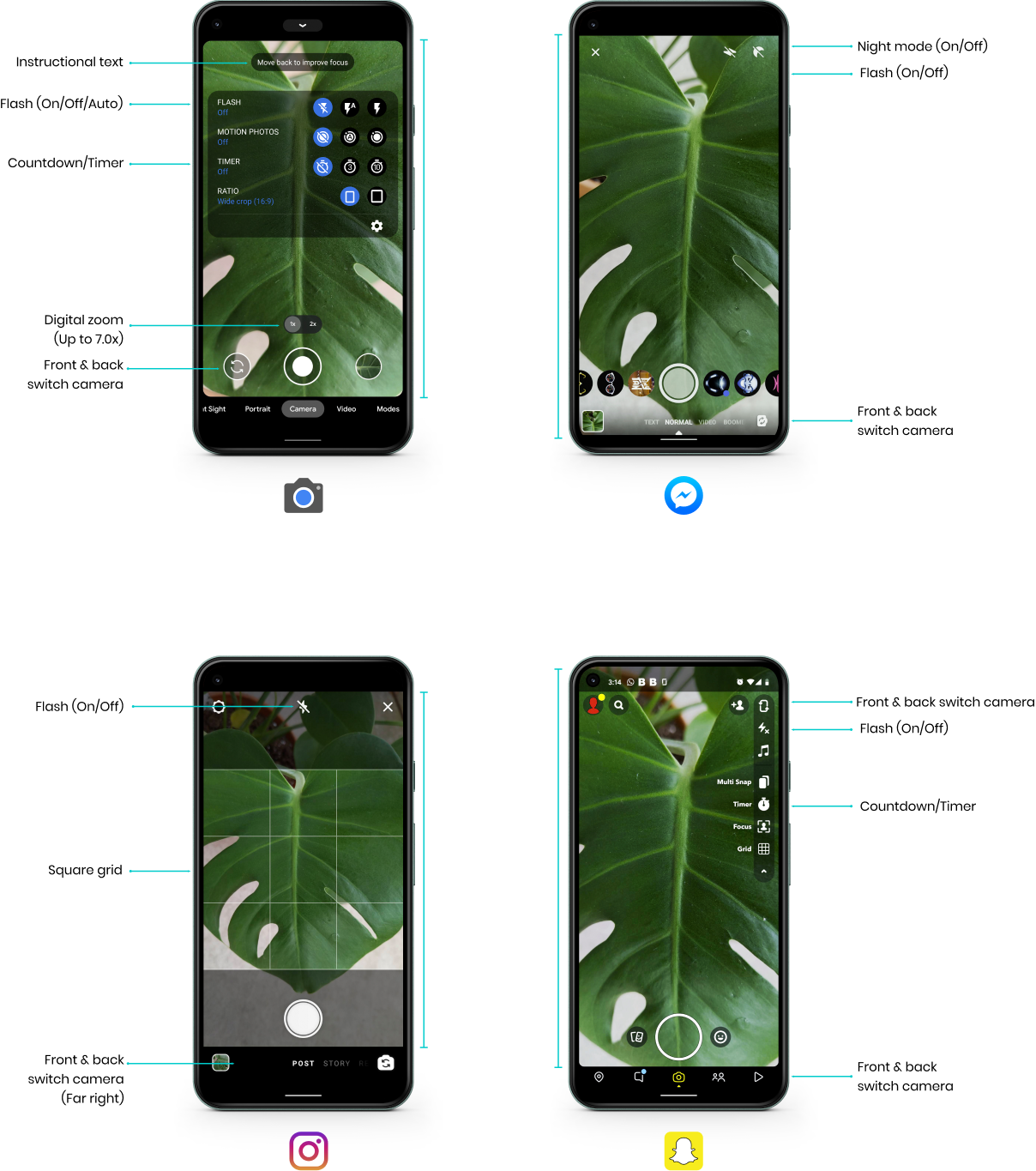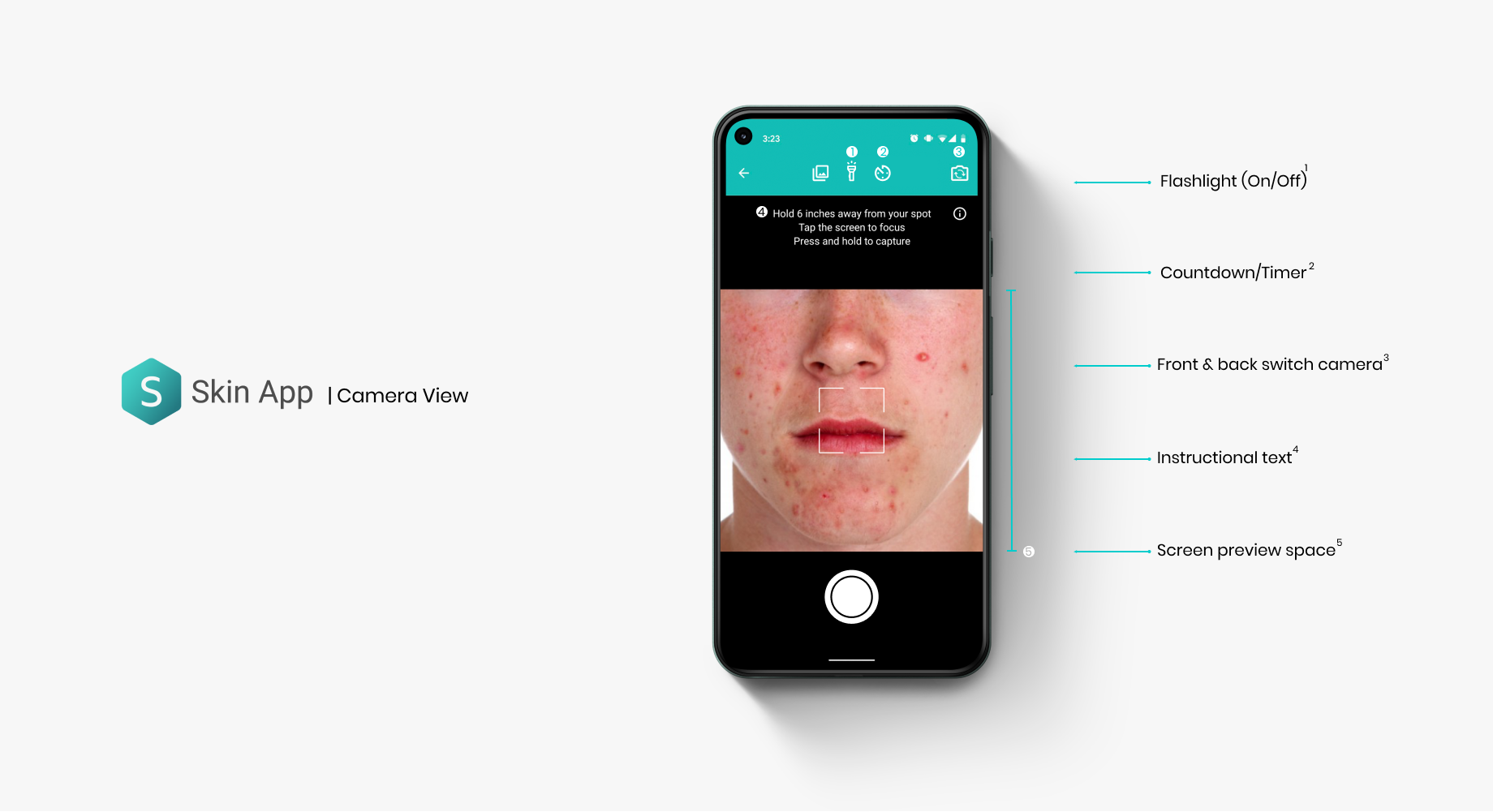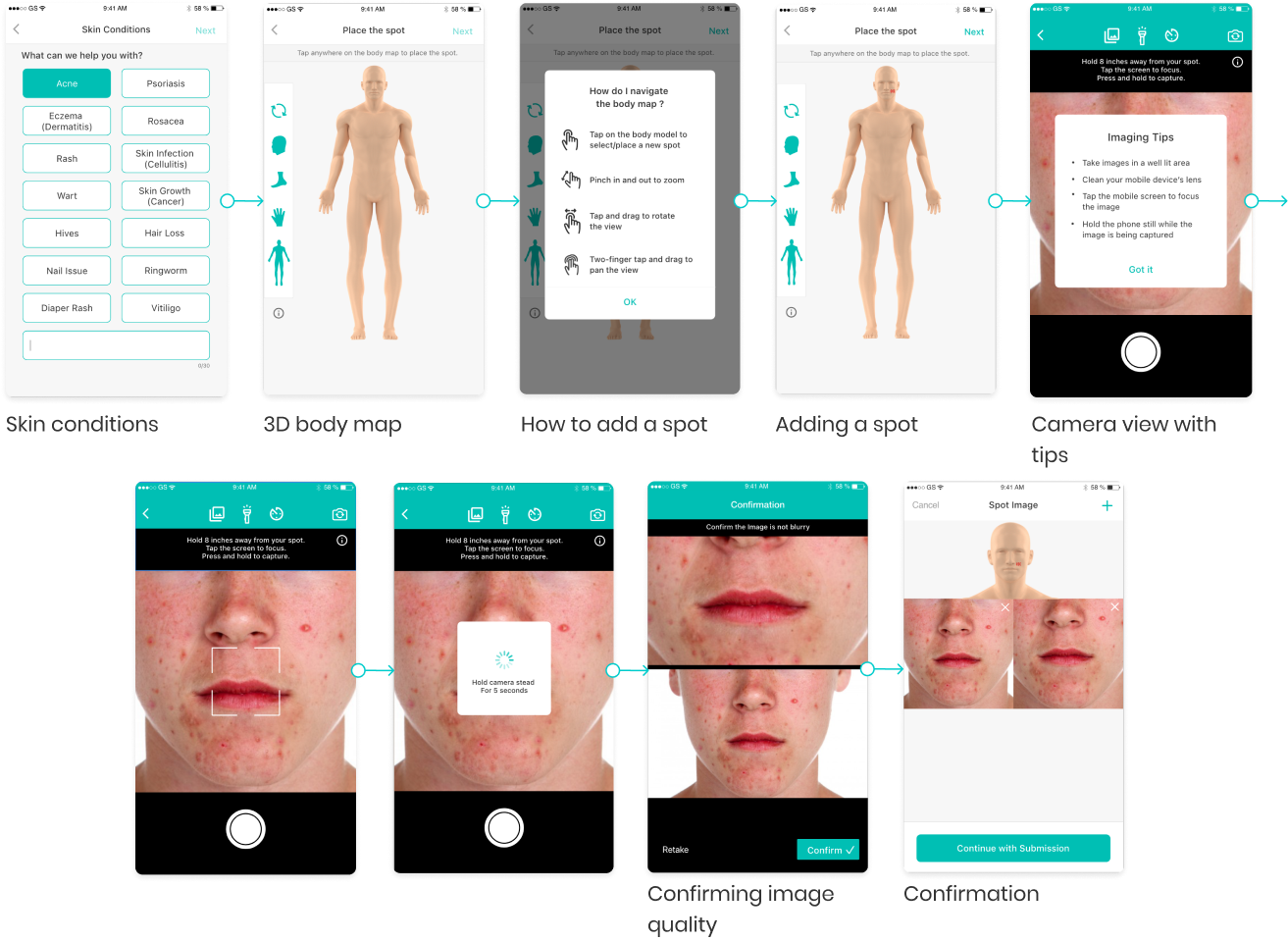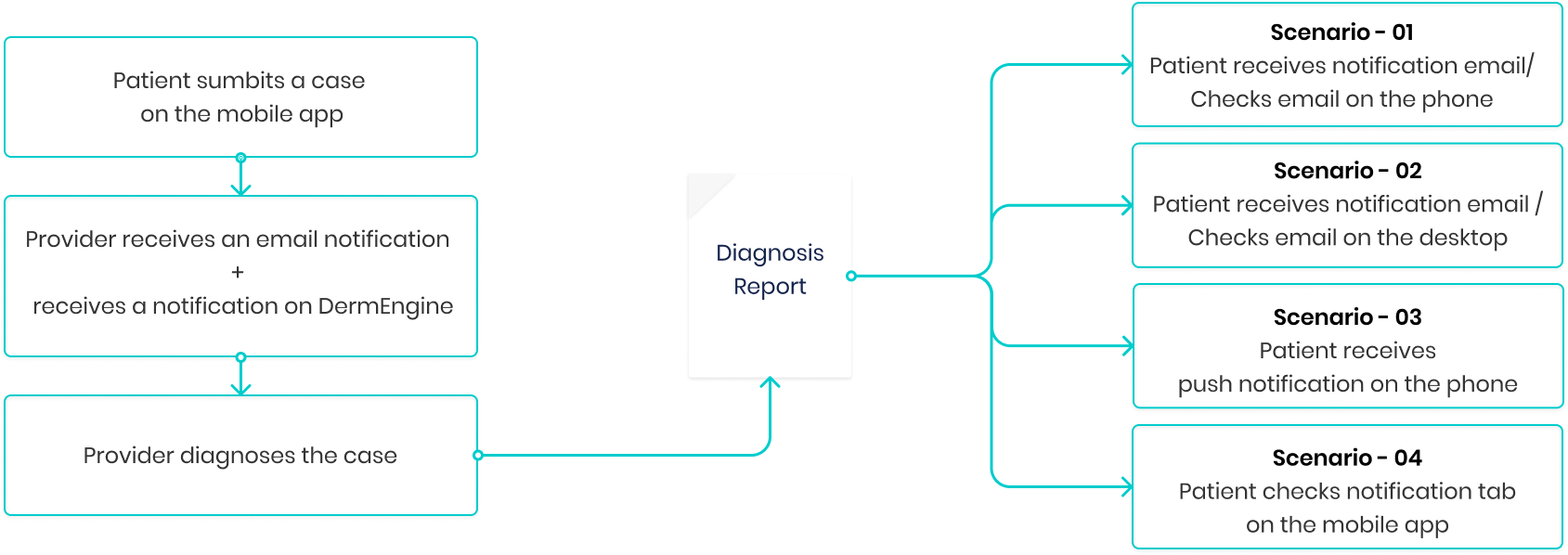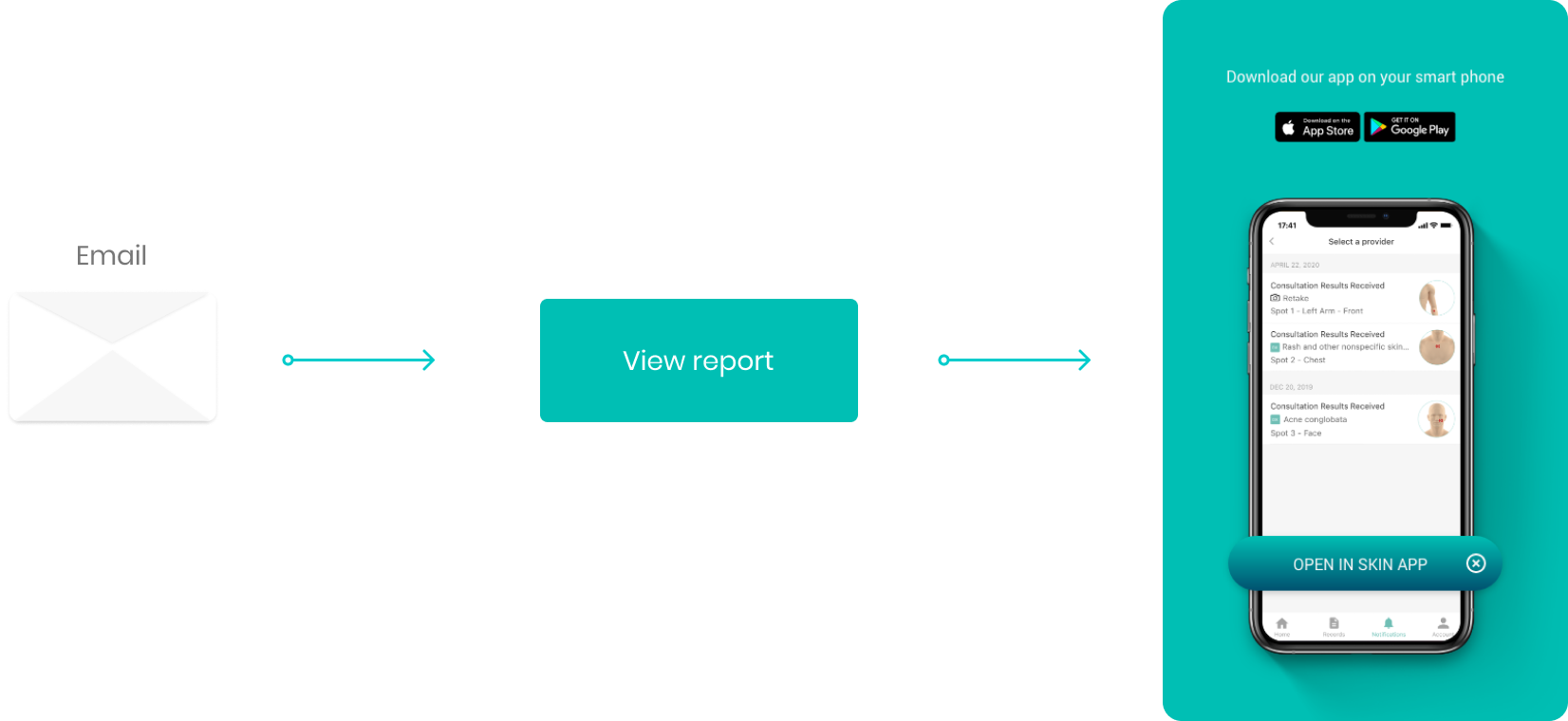Skin iMage Submission
Tackling the first challenge: Body mapping & Capturing images
The user could seamlessly interact with a 3D body model to pinpoint and added spots to desired body parts. Collaborating with a 3D artist, we identified each body segment for intuitive navigation, complemented by navigation tips. The 3D model's gender corresponded to the user's registration choice.
Designing a User-friendly Camera Controller Interface
I analyzed the UIs and the usability of the top four photo apps from the App Store to see how they addressed the problem.
The Trade-off: Form follows function
To maximize the image preview during skin photo capture, the Android camera app was the only one employing a concise static instruction (see table). Therefore, it was crucial for me to reserve space for instructional tips to assist users. A black background provided optimal contrast for skin photos. I prioritized a steady flashlight for even lighting, collaborated on automatic image enlargement for devices without optical zoom lenses, and retained the countdown timer and front/back camera switch.

Ensuring Accuracy in Skin image Submission
The user must tap on a specific area of the skin for accuracy if the skin condition is melanoma (skin cancer) or they could retake photos or confirmed that the image was not blurred.
The Final Submission Flow
Users submit images after interacting with a 3D body model to pinpoint desired spots and employing a user-friendly camera controller interface designed to maximize image preview and accuracy, which includes specific instructions for capturing skin images accurately, especially for conditions like melanoma.
User Testing
App Testing Success: Meeting User Needs
In user testing, I ensured the app met both patient and dermatologist needs. I recruited patients with diverse skin conditions and tech skills to cover various scenarios. Testing included filling out questionnaires, scheduling appointments, payment processes, and live video consultations for remote care on top of skin-image submission and managing notifications and reports.
Other than feedback about some minor interface adjustments, I received positive feedback about the testing.


